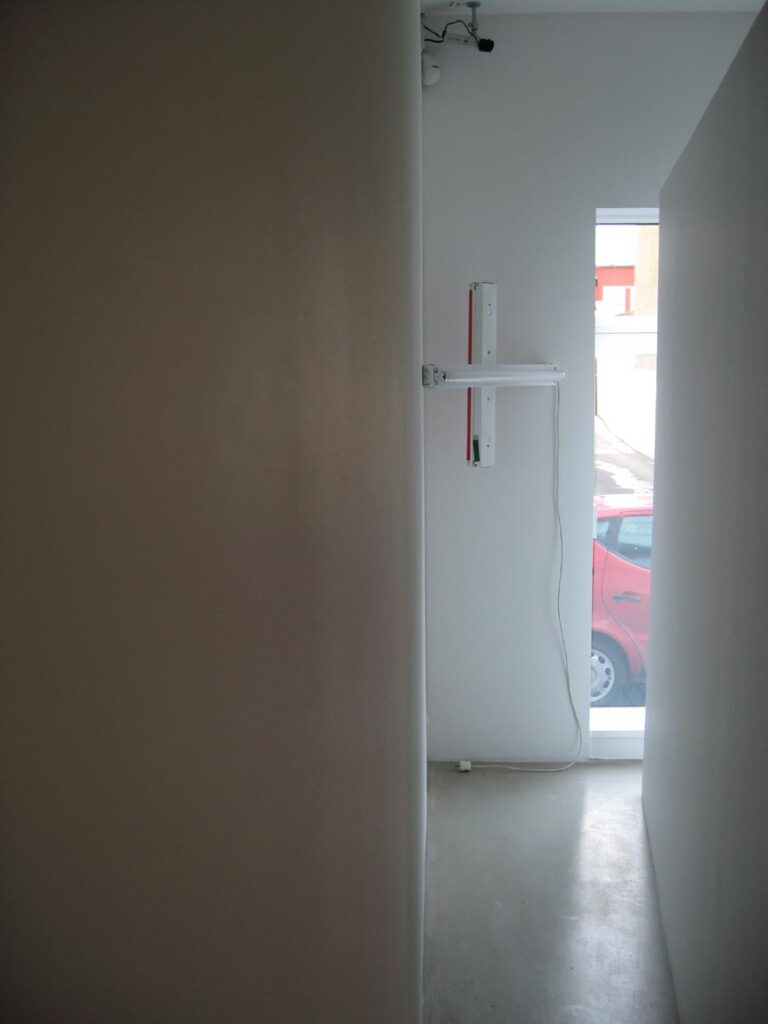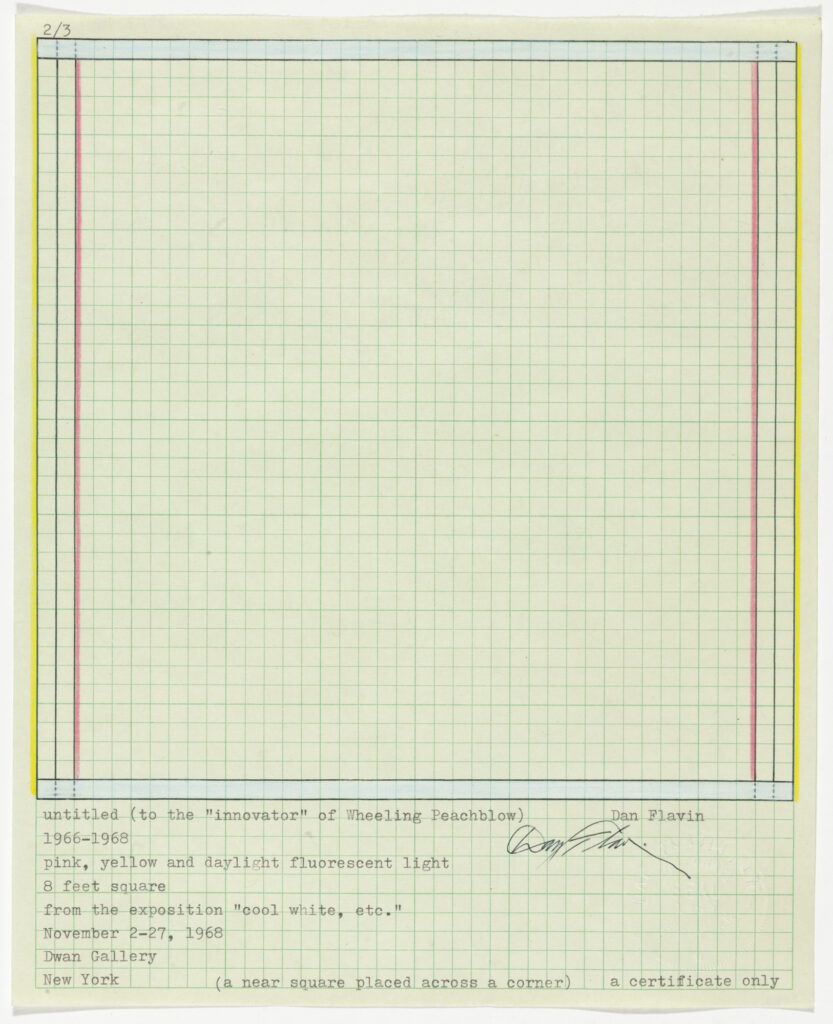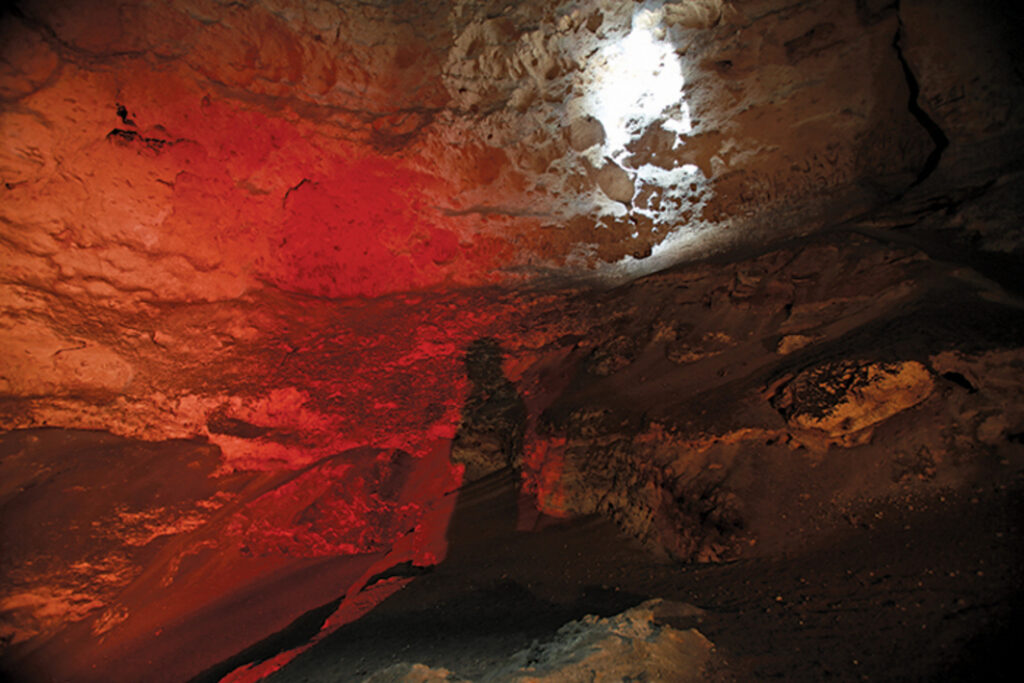It’s been a minute since I’ve gone deep into Dan Flavin’s work, but a tweet exchange with Joshua Caleb Weibley the other day really got me thinking. Joshua mentioned seeing crates of Flavin replacement bulbs during a museum install, and how visitors to the Guggenheim would accidentally break the fluorescent light bulbs with shocking regularity.
I’ve never seen that–and without inciting it, would low-key kind of like to, to be quite honest. The issue of constant replacement was acutely felt, because, as Joshua had pointed out, Flavin’s signature medium, fluorescent lights in various colors in union-made, commercial grade fixtures, had become obsolete, and the studio/estate had decided it needed to be propped up with their own hand-formulated replacements.

Which made me think of a Flavin that had been turned off. Or actually, a Flavin that had burned out. That’s it, that’s the piece. The history, the legacy, the ephemerality, the [absence of] light.
In another timeline, it’s happened: Flavin insisted that when the lights went out of production, that was it. People turned the pink ones off first, to make them last the longest. They’d crowd galleries on the special day when they got turned on. Flavin Day. Over the years they went out and were mourned as lost icons of their time, like demolished Paul Rudolph houses. People began to appreciate them as relics, not environments. Everyone contemplating them became Buddhists. Or Quakers. They became sites of meditation, where people manifested the light. Can you see it?
After a few decades, instead of half a dozen virtual Van Gogh shows, tourists flocked to Flavin Experiences, where simulations of his work alight were projection mapped onto the walls and floor. Critics complained, of course, about the physical difference between projected light and emanating light, and maybe a joker made some facsimile objects to simulate the lost fluorescent effect through tubes stuffed with LEDs.

And then there’s the rarity. It occurred to me how hard it might be to make a Flavin out of burned out lights. Properly burned out lights, not just turned off or disabled. How long might it take? When the qualities of desirability and dismissal are inverted, it really does change a lot. [Flavin’s work already has similar dichotomies built into it, though: in our timeline, there’s an existential link between the glowing, manufactured fixture/object and the mundane hand-drawn certificate. Both are required to comprise the work.]
But it did remind me of a visit to MoMA once where I saw, not only a crate of Flavin replacement bulbs, but another crate–of Flavin replaced bulbs. They kept the burned out bulbs. MoMA has five Flavin sculptures [and twelve diagram/drawings of sculptures, including one straight-up certificate that’s registered as a separate object, but that’s another blog post.] They’ve had Flavins since at least 1969. Just think of all the burned out bulbs they’ve accumulated. If other institutions do the same, then maybe rarity is not really a factor, so much as access, rarity by another name.

Well, there’s also the issue of the Flavin Estate, which might not be amenable to burned out works. Then again, that lack of consent didn’t stop Dia from commissioning Allora & Calzadilla to make a work installing one of their dozens of Flavins in a Puerto Rican cave. And anyway, Flavin is the work’s title, not its author.
